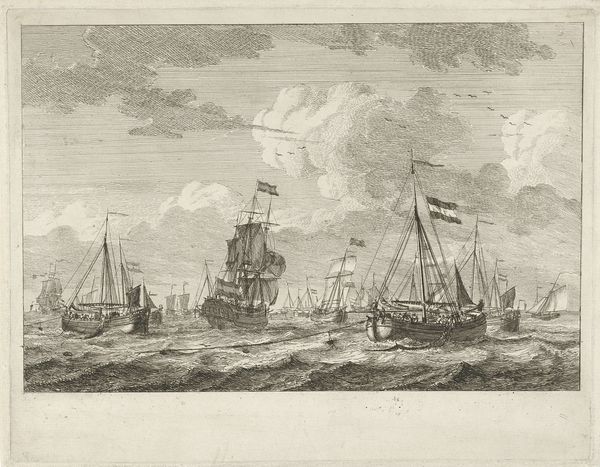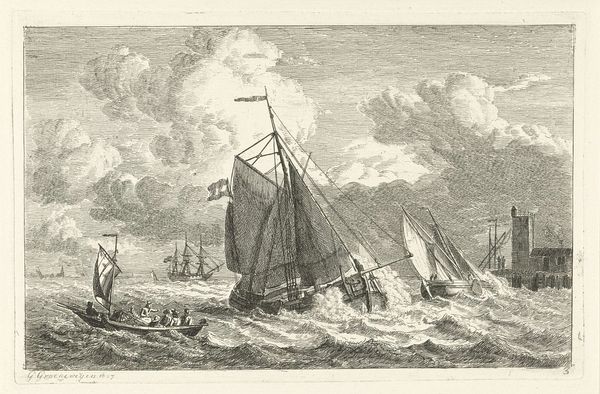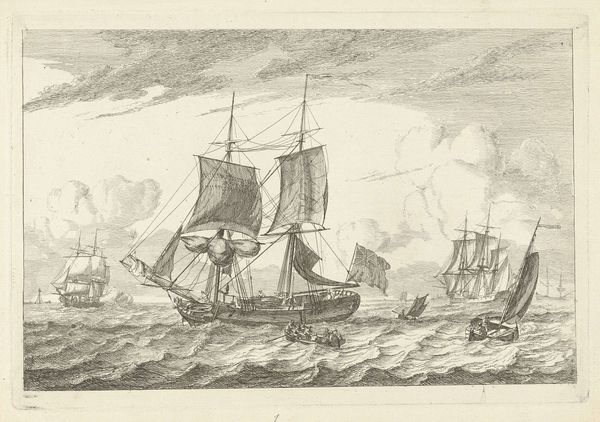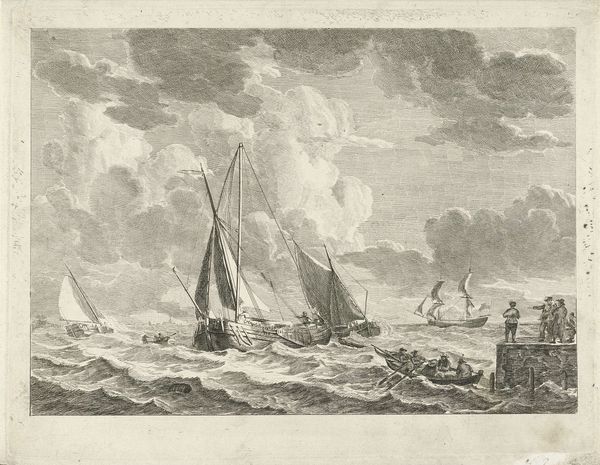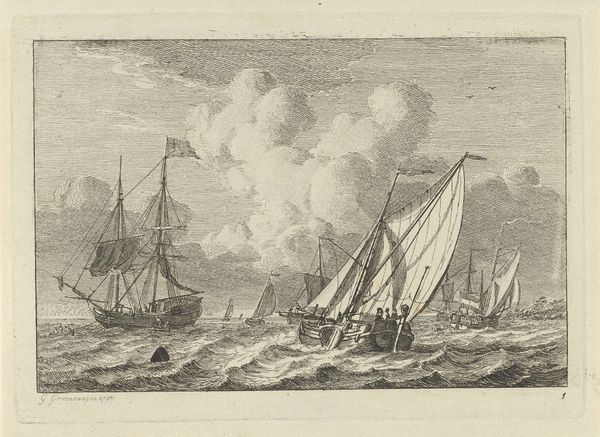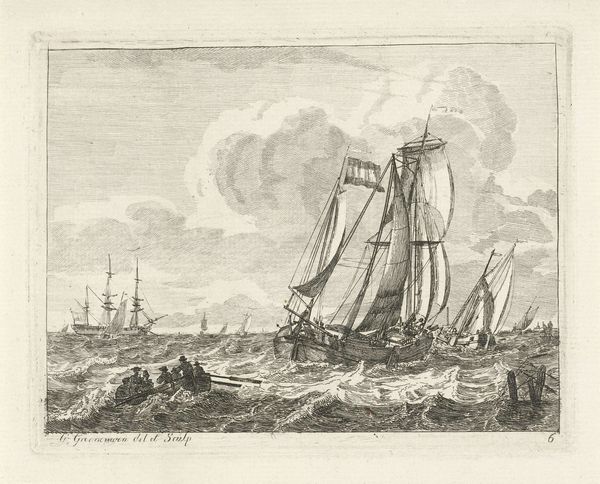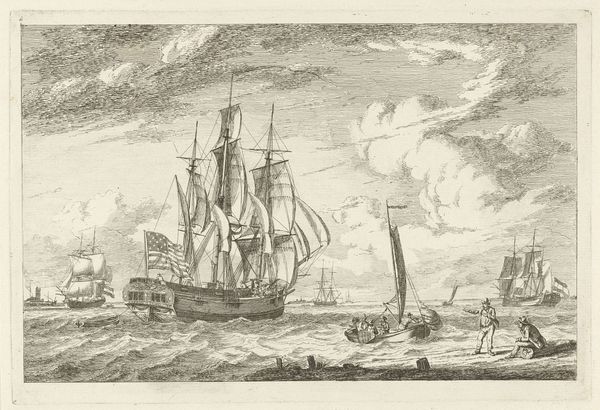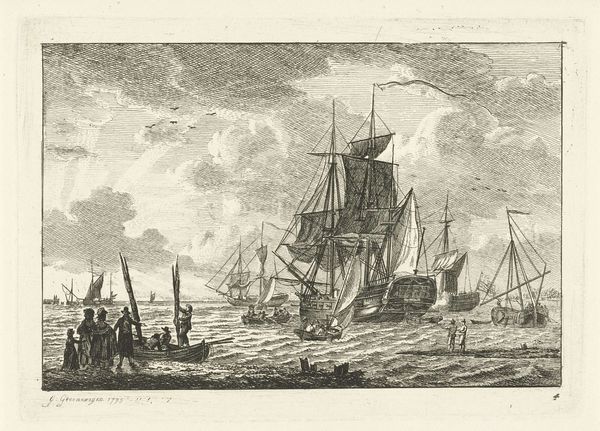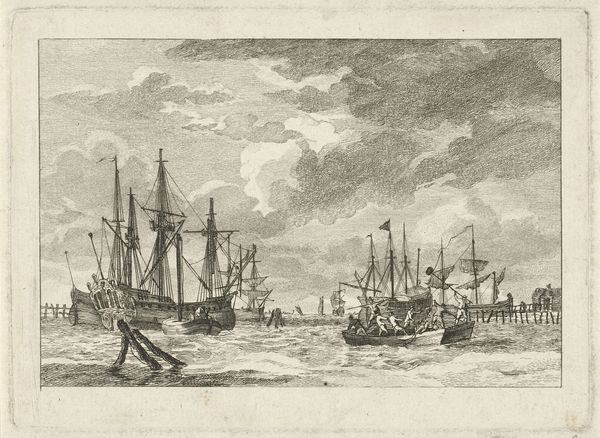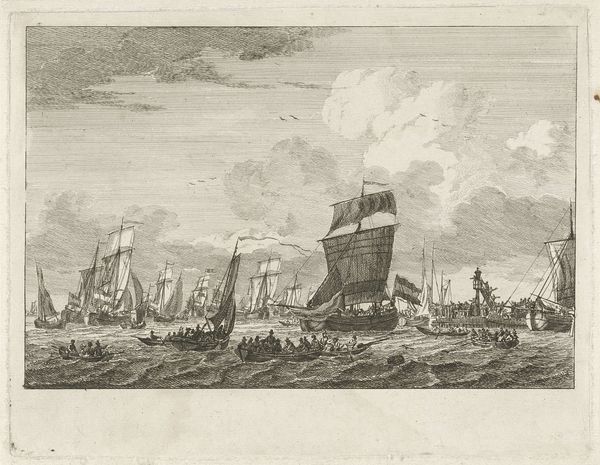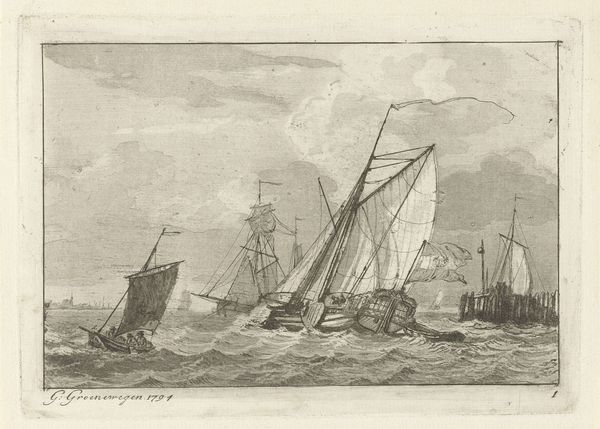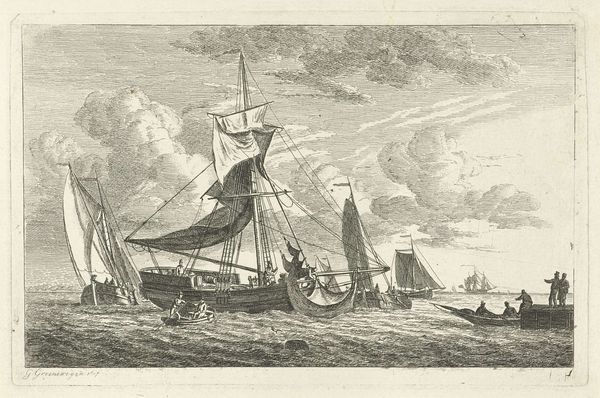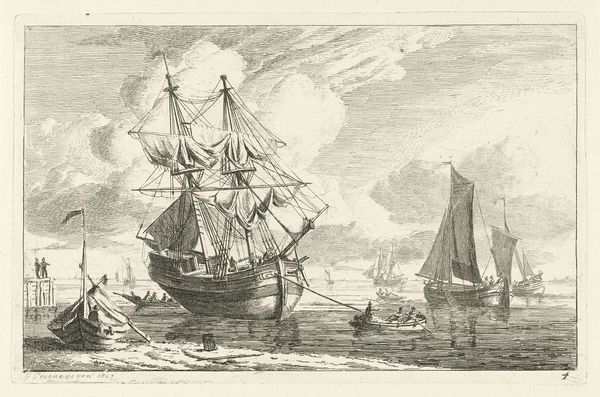
Dimensions: height 228 mm, width 296 mm
Copyright: Rijks Museum: Open Domain
Editor: This etching by Gerrit Groenewegen, "Diverse Zeilschepen en een Roeiboot" from between 1764 and 1826, is bustling with maritime activity. There's such incredible detail in the ships and the waves. It feels almost chaotic. What do you see in this piece, beyond the surface depiction of ships? Curator: The scene immediately evokes the Dutch Golden Age and its complex relationship to maritime power. But "chaotic" is interesting – does that perhaps reflect the unease embedded within the era's prosperity? This wasn't just picturesque genre painting. Consider who profited from this "activity." What are these ships carrying? Editor: Trade goods, presumably? I hadn't really considered the potential for exploitation connected to maritime trade at the time. Curator: Precisely. This bustling scene normalizes that exploitation, making it appear picturesque. Who are the figures in the rowboat? Are they merchants, overseers, or perhaps enslaved people being transported? Groenewegen provides detail without commentary, creating a veneer of neutrality, which then demands interrogation by us, the viewers. Editor: So you are suggesting the image’s "beauty" might obscure the realities of Dutch maritime trade, namely that it perpetuated unequal global power structures? Curator: Exactly. The detailed rendering is seductive, even deceptive. Ask yourself, who is centered in this image and who is not? Whose story is amplified and whose is silenced? Editor: It is eye-opening how a seemingly straightforward landscape can reveal such complicated histories and invite critical perspectives. Thanks for helping me look beyond the surface. Curator: My pleasure. Remember, art from any period doesn't exist in a vacuum. It reflects, and often reinforces, the prevailing power structures of its time. Always question what stories are *not* being told.
Comments
No comments
Be the first to comment and join the conversation on the ultimate creative platform.

